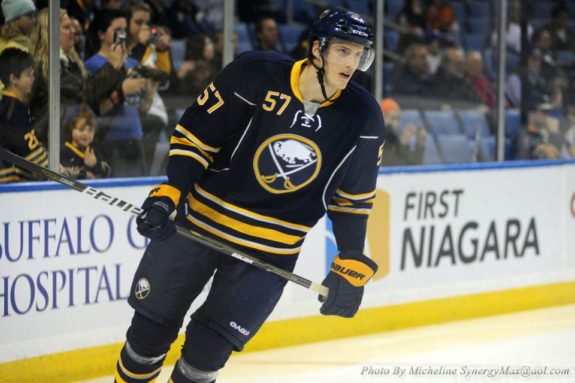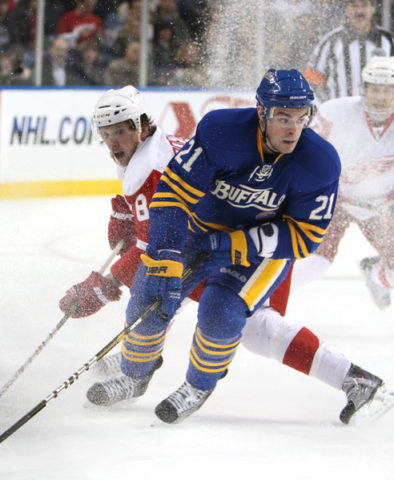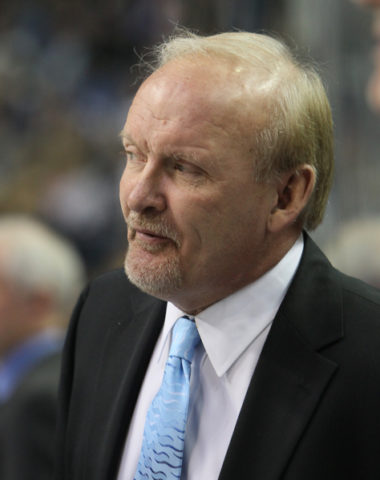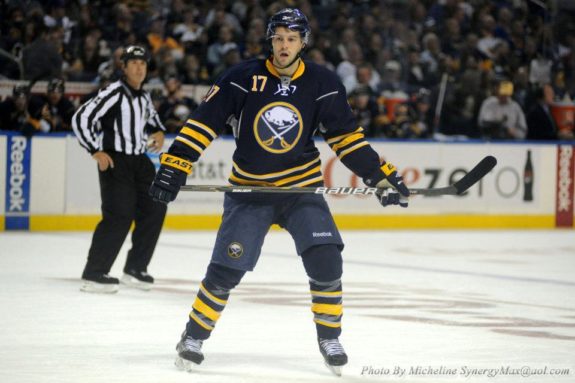I’m not sure if you’ve heard, but it’s been a while since the Buffalo Sabres made the playoffs. The NHL’s longest current postseason drought is in danger of reaching a full decade if Jack Eichel and company come up short again this upcoming season.
Spring of 2021 will mark the 10-year anniversary of the last time Sabres fans got to see their favorite team play postseason hockey. With that ignominious date approaching, it seems appropriate to look back at that 2010-11 Buffalo squad.
It was a season that began with high expectations that saw an ownership change happen in the middle of the season, a roster filled with fan favorites and a few names you may have forgotten, as well as a heartbreaking finish that still stands as one of the biggest collapses in franchise history.
A Team on Everybody’s Radar
For most of their existence, the Sabres have been one of the lower-profile franchises in the NHL. But thanks to some marquee names on the roster, the 2010-11 team was one that a lot of people were paying attention to heading into the season.
The big name, of course, was goaltender Ryan Miller. The 30-year-old netminder became a superstar in the 2009-10 season, winning the Vezina Trophy as the league’s top goalie and capturing the imagination of millions of fans with his legendary performance for Team USA at the 2010 Olympics. The new face of the franchise was at or near the top of almost every list featuring the league’s best goaltenders.
But he wasn’t the only Sabre who won some hardware in 2009-10. Defenseman Tyler Myers took home the Calder Trophy as the NHL’s top rookie after scoring 48 points and posting a plus-13 rating as a 19-year-old playing more than 23 minutes a game.

Despite those two award-winning seasons, the Sabres fell in six games to the Boston Bruins in the opening round of the playoffs.
The blue line took a hit with the offseason losses of the always-reliable Henrik Tallinder and Toni Lydman to free agency, though the Sabres did bring in veteran D-man Jordan Leopold.
With a deep forward group that included Thomas Vanek, Derek Roy, and Jason Pominville, head coach Lindy Ruff — entering his 13th season at the helm — had a lineup that once again figured to feature prominently in the playoff picture.
Changes Big and Small
With the 2010-11 season marking the franchise’s 40th anniversary, the Sabres did away with the old slug-themed jerseys and returned to the team’s original sweater design. Buffalo also added a 40th anniversary-themed alternate jersey.

But the big off-the-ice news came midway through the season. After much speculation, billionaire Terry Pegula successfully purchased the franchise for $189 million in a deal that was announced on Feb. 3 and approved on Feb. 18.
While the Pegulas have lost some of their goodwill with Sabres fans, the sight of the French Connection Line surprising the Sabres’ new owner remains one of the most memorable images in recent franchise history.
Slow Start, Strong Finish
Today’s Sabres fans have gotten used to hot starts to the season that eventually peters out. But the opposite was the case in 2010-11, as Buffalo won just three of its first 14 games (3-9-2) before rounding into form in the second half of the season. The Sabres went 14-4-3 in March and April to sneak into the playoffs as the seventh seed in the Eastern Conference with a record of 43-29-10 and 96 points.

The defense that everyone expected to be so good ended up taking a step back, as the team finished 14th in goals allowed (229). Miller, while still solid, regressed from his historic 2009-10 campaign. He finished the season with a 34-22-8 record, a .916 save percentage (SV%), a 2.59 goals against average, and five shutouts.
Myers had another fine season with 37 points, but the losses of Tallinder and Lydman had an impact on the blueline.
Instead, it was the offense that fueled much of Buffalo’s success: the Sabres finished ninth in the league in scoring with 245 goals. While only three players scored more than 50 points — Vanek (73), Pominville (52), and Drew Stafford (52) — the Sabres had 11 different players score at least 10 goals: Vanek (32), Stafford (31), Pominville (22), Tyler Ennis (20), Nathan Gerbe (16), Tim Connolly (13), Leopold (13), Paul Gaustad (12), Jochen Hecht (12), Myers (10), and Roy (10 in just 35 games).
Stafford ended up having a career season despite playing just 62 games. The 25-year-old finished tied for fifth in the league in goals per game (0.50) and had four hat tricks, tied for most in the NHL. Vanek, meanwhile, bounced back from a subpar 2009-10 season to notch his third 30-goal campaign and his second 70-point season.
Upset Dreams Fall Apart
The Sabres drew a very tough opponent in round one of the playoffs: the defending Eastern Conference Champion Philadelphia Flyers. A year after a surprising run to the Cup Finals, Philly emerged as an offensive powerhouse in its first full season under head coach Peter Laviolette.
Claude Giroux, Mike Richards, Danny Briere, Jeff Carter, and Ville Leino formed the core of a dynamic group of forwards. On defense, a banged-up but still-effective Chris Pronger led the way in front of the goaltending duo of Sergei Bobrovsky and Brian Boucher.
After falling behind 2-1 early in the series, the Sabres rallied to win two straight and take a 3-2 series lead thanks to Ennis’ overtime game-winner in Game 5 that put Buffalo one win away from a big-time postseason upset.
But the Flyers answered back in Game 6 with an OT winner of their own, courtesy of Leino. Unfortunately for Buffalo fans, Game 7 didn’t contain a whole lot of drama. Philadelphia raced out to a 4-0 lead and never looked back, notching a 5-2 win to take the series and hand Sabres fans yet another crushing playoff disappointment.
Vanek ended up scoring five goals in the series, but the team’s top scorer was someone who only played nine games in the regular season: 23-year-old forward-turned-defenseman Marc-Andre Gragnani, who scored a team-high seven points against the Flyers after being called up to replace Andrej Sekera.

Miller (.917 SV% in the series) ended up being outplayed by the veteran Boucher (.934 SV%). Philadelphia actually became the first team since 1988 to win a series with three different starting goaltenders, as Boucher started five games while Bobrovsky and Michael Leighton made the other two starts.
Giroux led the Flyers with nine points, but it was former Buffalo co-captain Briere who killed his former team with a series-high six goals. It was yet another reminder to Sabres fans of the disastrous decision to let both Briere and Chris Drury walk after the 2006-07 season.
Will 2020-21 Sabres Make New Memories?
For as disappointing as the 2011 playoff exit was, it, unfortunately, represents the high point of the last 10 years of Sabres hockey — it’s all been downhill since then. The 2010-11 team might not stand with the likes of the Cup teams of 1974-75 and 1998-99, or the Conference Final runs of 2005-06 and 2006-07 in the hearts of Buffalo fans. But they hold the inglorious distinction of still being the last Sabres’ team to make the playoffs.
Will the 2020-21 squad mark the 10th anniversary of the franchise’s last playoff appearance with a return to the postseason? After an extremely busy offseason, there’s reason to believe that just might be the case.